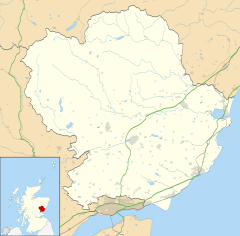SC-8109
SC-8109 | |
| 임상자료 | |
|---|---|
| 기타 이름 | 19-Norspirolactone; 19-Nor-17α-(2-carboxyethyl)testosterone γ-lactone; 3-Oxo-17β-hydroxyestr-4-ene-17-propanoic acid lactone; 17-Hydroxy-3-oxo-19-Nor-17α-pregn-4-ene-21-carboxylic acid γ-lactone |
| 식별자 | |
| |
| CAS 번호 |
|
| 펍켐 CID | |
| 켐스파이더 | |
| 화학 및 물리적 데이터 | |
| 공식 | C21H28O3 |
| 어금질량 | 328.452 g·190−1 |
| 3D 모델(JSmol) | |
| |
| |
SC-8109는 시판되지 않은 스피롤락톤 그룹의 스테로이드 안티미노코르티코이드다.[1][2] 미네랄로코르티코이드 수용체의 강력한 대항마로 관련 약물 SC-5233(이 중 SC-8109가 19노르 아날로그)보다 더 강력하다.[1][3] 그러나 SC-8109는 울혈성 심부전 환자에게는 경미한 이뇨작용을 일으키긴 했지만 비교적 경구 생체이용률과 효력이 낮은 것으로 밝혀졌다.[1][4][2] 또 다른 스피롤락톤인 스피로놀락톤(SC-9420; 알닥톤)이 그 뒤를 이어 구강 생체이용률과 효력이 모두 좋았고, 시판된 최초의 안티미노코르티코이드였다.[1][5]
SC-8109는 항생물학적 활동 외에도 프로게스테론 활동과 유사한 효력이 있는 강력한 프로게스테론 활동을 보여준다.[6] 그것의 아날로그인 SC-5233은 유사하지만 덜 강력한 프로게이젠 활동을 가지고 있다.[6] 또한 SC-5233은 동물에서 테스토스테론의 효과를 반감시키는 항안드로겐 활동을 어느 정도 가지고 있는 것으로 평가되어 왔으며 SC-8109도 마찬가지일 수 있다.[7]
| 화합물 | PR | AR | ER | GR | MR | SHBG | CBG |
|---|---|---|---|---|---|---|---|
| 프로게스테론 | 100 | 3–10 | <1 | <1 | 3–10 | ? | ? |
| SC-8109 | 191 | 25–50 | <1 | <1 | 15–25 | ? | ? |
| 값은 백분율(%)이다. 참조 리간드(100%)는 에스테로논, 에스테로스테론, 에스트라디올, 에스테로스테론이었다. | |||||||
참고 항목
참조
- ^ a b c d P. J. Bentley (1980). Endocrine Pharmacology: Physiological Basis and Therapeutic Applications. CUP Archive. pp. 160–. ISBN 978-0-521-22673-8.
- ^ a b E. Buchborn; K. D. Bock (14 December 2013). Diuresis and Diuretics / Diurese und Diuretica: An International Symposium Herrenchiemsee, June 17th–20th, 1959 Sponsored by CIBA / Ein Internationales Symposium Herrenchiemsee, 17.–20. Juni 1959 Veranstaltet mit Unterstützung der CIBA. Springer-Verlag. pp. 224, 261. ISBN 978-3-642-49716-2.
- ^ Hans H. Ussing; Poul Kruhoffer; Hess J. Thaysen; N.H. Thorn (8 March 2013). The Alkali Metal Ions in Biology: I. The Alkali Metal Ions in Isolated Systems and Tissues. II. The Alkali Metal Ions in the Organism. Springer Science & Business Media. pp. 418–. ISBN 978-3-642-49246-4.
- ^ Milan L. Brandon (1 January 1962). Corticosteroids in medical practice. Thomas. ISBN 9780398002152.
- ^ Dennis V. Cokkinos (6 November 2014). Introduction to Translational Cardiovascular Research. Springer. pp. 61–. ISBN 978-3-319-08798-6.
- ^ a b Ralph I. Dorfman (5 December 2016). Steroidal Activity in Experimental Animals and Man. Elsevier Science. pp. 371–. ISBN 978-1-4832-7299-3.
- ^ Kagawa CM, Sturtevant FM, Van Arman CG (1959). "Pharmacology of a new steroid that blocks salt activity of aldosterone and desoxycorticosterone". J. Pharmacol. Exp. Ther. 126 (2): 123–30. PMID 13665517.
[SC-5233] (total dose of 5 mg/rat) partially blocked the effects of testosterone propionate on the seminal vesicles and prostate in similar animals.
- ^ Raynaud, J.P.; Ojasoo, T.; Bouton, M.M.; Philibert, D. (1979). "Receptor Binding as a Tool in the Development of New Bioactive Steroids". Drug Design. pp. 169–214. doi:10.1016/B978-0-12-060308-4.50010-X. ISBN 9780120603084.


